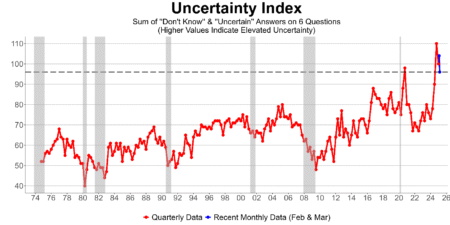Beena Ammanath – Global Deloitte AI Institute Leader, Founder of Humans For AI and Author of “Trustworthy AI” and “Zero Latency Leadership.”
In this era of humans working with machines, being an effective leader with artificial intelligence (AI) takes a range of skills and activities. In this series, I provide an incisive roadmap for leadership in the age of AI.
At many enterprises, the future with AI is coming into focus, with experimentation giving way to deployment at scale. While technology progress is accelerating, the human element also requires attention and investment, and recent data suggest organizations need to double-down on bringing their workforce along on the AI journey.
Deloitte’s State of Generative AI in the Enterprise Q4 survey found 21% of CxOs believe GenAI is already transforming their organization. They decreasingly report a lack of technical talent and skills as barriers to GenAI value, with 36% of respondents citing it in Q1 2024 but only 26% doing so by the end of the year. Yet, views from the workforce are not always so upbeat. Just 8% of non-CxOs think GenAI is transforming their organization, according to the same GenAI survey.
What is more, a Deloitte survey of AI in the workplace found differences in perspective between early career workers and tenured workers. While 75% of early career workers believe AI (of all types) will create new job opportunities in their field, they also report concerns over fewer opportunities for on-the-job learning and a lack of training from employers on how to use AI. Tenured workers, for their part, show lower levels of excitement and confidence in AI, as well as fewer concerns over incorporating AI into their work.
There are some clear trends here. CxOs are pushing ahead with their AI agenda and making progress. The workforce, particularly new workers, see the value but are somewhat less certain about what it means for them and how to be successful with AI. Since an organization’s workforce is an indispensable component of AI deployments, herein is an opportunity to support and empower workers while also driving AI value for the organization.
Changing Perceptions Through Learning
As a proxy for the benefit workforce training and upskilling can yield, consider the findings of Deloitte’s State of Ethics and Trust in Technology 2024 report. The vast majority (80%) of responding organizations reported they require employees to complete technology ethics training. Of these, 70% responded that the ethics training had changed their behavior with technology. Yet, another recent study from Slingshot found that just 23% of employees are completely confident in their ability to use AI.
These findings show that engaging employees with AI training is not just an academic exercise. It does change how they use new tools, which is important for overcoming obstacles to scale. Regulatory compliance and risk management are two of the top challenges to realizing AI value, and technology ethics education empowers the workforce to use AI in a compliant, trustworthy manner, helping to bring down those barriers to value.
There is a deeper lesson, however, which is that when the workforce is given the opportunity to learn about AI, they see more clearly how it can improve their productivity and employment satisfaction. As noted in the Harvard Business Review, when employees are left out of the AI adoption process, “they become averse to working with AI, never develop trust in its capabilities, and resist even the positive changes that come from using it.”
We can imagine how taking an active approach to training can address many of the concerns workers have about their future with AI. Concerns over AI privacy, transparency and fairness can be alleviated with a structured approach to understanding these ethical principles so as to uphold them in working with AI.
Fears that jobs may become completely automated can be eased with a clearer understanding of what AI can and cannot do, as well as the essential human role in validating AI outputs and putting them to use. And worries about a lack of opportunity to improve professionally via firsthand experience can be managed as employees receive knowledge and skills development as a byproduct of AI training and use.
Value-driving AI deployments depend on the people using them in their work. If adoption is lethargic and employees view technology with uncertainty, it will weigh on AI’s value to the enterprise. Conversely, when employees understand the AI tools they use and are eager to capture the productivity benefits, they enable scale and the envisioned business value. Enterprises have invested heavily in the technologies enabling AI, like infrastructure, data and models, but to access AI’s greatest potential, organizations also need to invest in the human element.
Leaving The Fear Cycle
Today, the hype (and sometimes fear) that characterized the early days with deep learning and GenAI is giving way to a clearer appreciation of the value AI can bring to a business and the decisions and investments paving the way to ROI. Importantly, technology training does not need to become a burdensome activity. For organizations surveyed in Deloitte’s ethics and trust report, half said they spend 1-4 hours annually on ethics-focused training related to technology. Another 18% said they spend 5-9 hours.
Over the course of a year and thoughtfully integrated with existing learning programs, a relatively small amount of time can add up to transformative results across the organization. It could come in the form of seminars and directed study offered by the enterprise. It could also be incentivizing independent learning or creating sandboxes where workers can experiment and become familiar with AI tools in a consequence-free environment.
Each organization will determine where AI training fits into their existing programs, but at the core of it, all enterprises face the same challenge and opportunity. The more the workforce understands AI, the less they fear it, and the better equipped they are to use it for business value.
Forbes Business Council is the foremost growth and networking organization for business owners and leaders. Do I qualify?
Read the full article here











